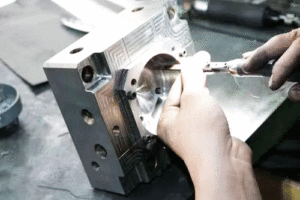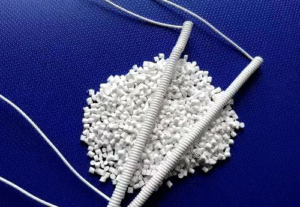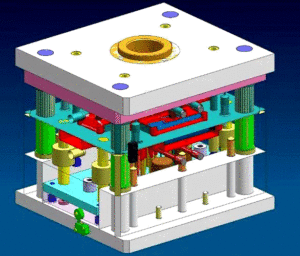
Polishing Treatment for Plastic Molds
Polishing Treatment for Plastic Molds With the widespread application of plastic products, such as daily-use items and beverage packaging containers, there is often a requirement
The short filling of glue is a common problem, but it’s not difficult to solve. When technical means can’t solve the problem, it can be improved by the design and manufacture of molds.
Tips: When such problems occur, it is necessary to observe the movement stroke of the screw of the injection molding machine when injection. Pay special attention to the position of the screw when the holding pressure and the melt is completed.
In this case, first check whether there is any leakage in the barrel of the injection molding machine. Second,whether there is leakage in the matching position between the injection nozzle and the main bushing of the mold. If there is glue leakage, it is a natural phenomenon that the productlacks glue and should be eliminated first. Only when you confirm that there is no leakage of molten glue, you carry out the following inspections.
When the product is not full of glue and there is no glue leakage, it may be for the insufficient glue. At this time, it is necessary to increase the melt stroke and the amount of glue. After increasing the melt stroke, you should continue to inject while observing the amount of residual glue on the screw, the melt stroke and the glue feeding of the product.
After increasing the melt stroke, the product’s glue feeding increases. Itindicatesthat the amount of glue is insufficient, and the melt stroke needs to be increased. When the melt stroke reaches the maximum, the product is still not full of glue. Then, a larger injection molding machine needs to be replaced.
If the transfer of the melted glue increases, the amount of glue in the product during injection molding does not increase correspondingly, it may be the glue leakage of theglue meson.
When the product lacks glue, check whether there is any leakage between the barrel of the injection molding machine and the nozzle mold of the injection molding machine. Secondly, check whether there is any leakage of the glue meson at the front end of the screw of the injection molding machine. Only after excluding these two conditions, we can make other judgments. The following judgment methods are based on the conditions except the above two conditions.
The second case:
The screw of the injection molding machine can reach the set melt stroke, but it cannot reach the set injection stroke (there is residual glue amount). This situation means that there is melt in the barrel, but it cannot be shot into the cavity. Possible reasons:
The melt fluidity is not enough, the fluid penetration is large, and it is difficult for the gel to fill the mold. Possible reasons:
a) Poor fluidity of the raw material itself.
b) The processing temperature of the barrel is set too low or the temperature does not reach the set value, such as the false temperature display.
c) The mold temperature is low. Although the fluidity of the colloid in the barrel is good, after flowing into the mold runner, the temperature drops too fast. Sothe fluidity in the cavity andmold runner is poor, resulting in glue lacking.
The injection pressure is low, and the gel cannot overcome the filling limit; the injection speed is low, the melt cooling time during filling is long, and the fluidity is reduced, resulting in high filling resistance; the injection holding time is short, and the filling stops before the product is full. Lead to product dissatisfaction with glue.
If the cold glue, impurities or other substances block the glue channel, then the glue cannot be filled. And the product will lack the glue. At this time, it is necessary to check whether the injection nozzle, main runner, sub runner, gate, etc. are unblocked. If it is blocked, then clean it.
The defects of the mold casting system are divided into the following aspects:
a) The flow channel is too small, too thin or too long, which increases the fluid resistance.
b) The runner and the gate are rough with scars, or have sharp angles. The surface is rough, which affects the material flow.
c) The cold slug well is improperly set or not set up. Whilethe cold glue is not collected completely, causing the flow channel or gate to be blocked.
d) Improper setting of the gate position or quantity. The filling resistanceis greater than the injection pressure. And the gel cannot be filled into the mold.
e) Poor mold exhaust or improper setting of the exhaust position, local air trapped in the mold, resulting in insufficient product filling.
Poor product structure design, uneven glue position design, and overly thin partial glue position, result in dissatisfaction of product filling.

Polishing Treatment for Plastic Molds With the widespread application of plastic products, such as daily-use items and beverage packaging containers, there is often a requirement

Injection Molding Techniques for TPE and TPR Injection Molding Techniques for TPE and TPR 1. Dry the TPE and TPR material before injection molding It

Winter Maintenance Measures for Injection Molding Machines As winter approaches and temperatures gradually drop, a cold chill envelops the earth. While ensuring personal warmth, it

Assessment Regulations for Mold Trial Exceeding 3 Times Assessment Regulations for Mold Trial 1. Purpose The purpose of this regulation is to standardize the work of